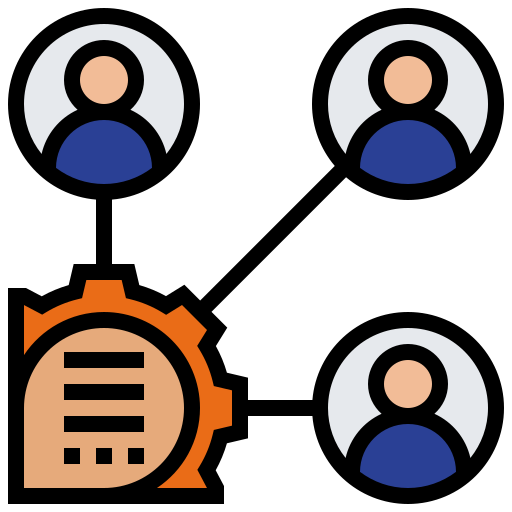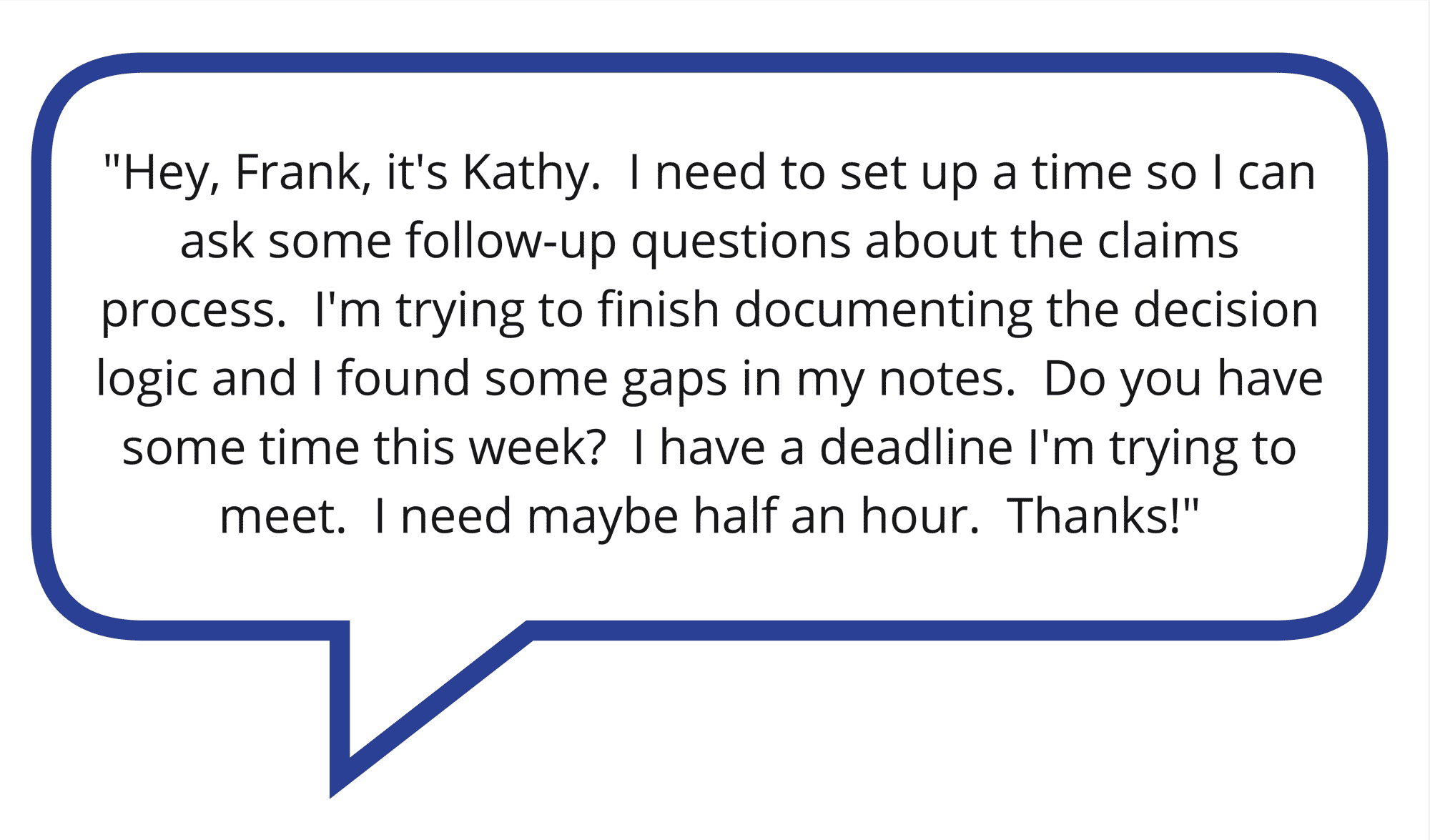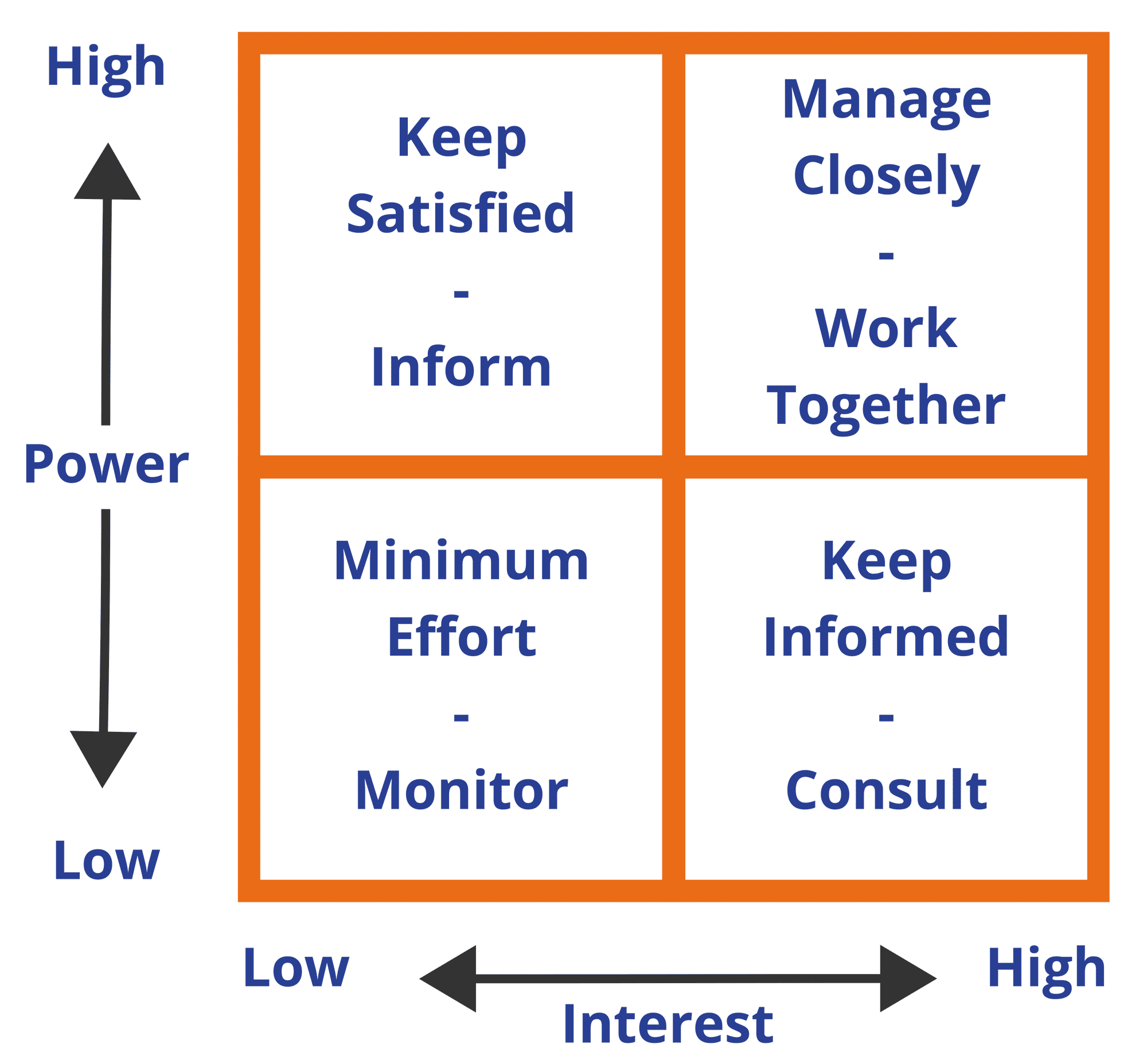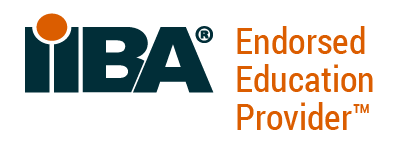Maybe it’s just me, but I frequently find that the most challenging aspect of a project is the people. We refer to the people involved in a project as “stakeholders”.
Just knowing who your stakeholders are isn’t enough. We need to analyze stakeholders and develop a thorough understanding of them in order to work effectively with them. The BABOK® Guide says that stakeholder analysis involves not just identifying stakeholders, but also identifying their “characteristics”. Hmm. That’s…helpful. What exactly are stakeholder “characteristics”?


- The basics
- Their “stake”
- Their attitude
- How to “feed the need”
The Basics
Make sure you’ve covered the basics. Simple things like someone’s vacation schedule or work from home schedule can have a big impact on their availability for project work. Our Stakeholder Analysis Worksheet can help you capture the details you need to know about each stakeholder including:
- Name, title and role on project
- Contact information
- Which business units or customer groups they represent
- Schedule information
- Communication preferences

Their “Stake” – What’s In It For Me?
Imagine you’re a busy subject matter expert and you get an email from your friendly neighborhood analyst requesting some time to meet. The email might say something like this:

If I do a little analysis on that conversation by counting names and pronouns, I see:
Frank/you/your: 2
Kathy/I/me/my: 9
This message is all about me, and what I need, and my deadlines. Let’s face it – many of our stakeholders are really busy people. They generally work on projects in addition to their “real job”, not instead of it. They’re much more likely to make time for us if we phrase the request from their perspective. We need to pay attention to the “WIIFM” – What’s In It For Me. And the “me” in that acronym needs to refer to our stakeholder. What’s in it for them? Why should they spend their valuable time working with us?

Of course, this requires that we understand what their WIIFM is. How will our solution make their life better? What’s the benefit to them? Knowing what our stakeholders stand to gain – or lose – from our project will help us work with them more effectively. Using that knowledge when we communicate with them can give them a reason to devote time and energy to the project.
We shared our Persona Template in a previous blog. While personas are typically developed to help us better understand an end user population, they can also be an effective tool for stakeholder analysis. Consider building out a persona for some of your key stakeholders to help you appreciate their perspective.
Their Attitude
Resistance to change is real. Not everybody welcomes new solutions with open arms. During stakeholder analysis, you need to determine how your stakeholders feel about the proposed changes.

We don’t need every stakeholder to be an enthusiastic cheerleader for our project, but we’d sure like to avoid having them in the hostile/opposed/uncooperative range. So how do we move them up the scale? Here comes the classic answer: it depends. You’ll first need to start by doing some root cause analysis. Why do they feel that way?
One of my favorite bosses taught me that the root of many employee misbehaviors is fear. People often react badly to change because they’re afraid of something. He referred to it as the “FUD” factor – fear, uncertainty, and doubt. While we can’t fix all potential concerns, if we can identify concerns we have a better chance of addressing them and raising our stakeholders’ level of commitment.
Ultimately, stakeholders who remain hostile, opposed, or uncooperative pose a risk to the project. That risk should be captured and monitored; be sure to think through how to do that in a way that is consistent with your organization’s culture and policies.
Feed the Need
Analyzing stakeholders should culminate in a plan outlining how you will collaborate and communicate with your stakeholders. It doesn’t have to be a lengthy, formal document, but you should think through how best to work with each individual on the team. A common tool used to help with this analysis is a Power & Interest Grid. Stakeholders are evaluated on two axes:
Power
Is the stakeholder a decision-maker? Are they a key influencer in the organization? How much control do they have over the project and the team?
Interest
How much do they care about the project and its outcome? Does it directly affect them and/or their team? Or are they only affected indirectly?

We don’t have unlimited time to spend on communication with stakeholders. For me, this grid helps prioritize the time and effort I put into keeping stakeholders informed. Keep in mind that these are generalities; you’ll need to adapt these guidelines for your specific situation.
Low Interest, Low Power
Don’t invest a lot of time creating communication for this quadrant. Provide them with the minimum amount of information that will keep them satisfied.
High Interest, Low Power
Subject matter experts often fall into this group. We want to ensure that they have the information they need, but it’s often not productive to tailor our communication for specific individuals in this group.
Low Interest, High Power
Ensure that this group receives enough information to be up to date on the project, but don’t overwhelm them with frequent or highly detailed communications.
High Interest, High Power
Make sure you understand the individuals in this quadrant well and take time to tailor communications that go to them. They should receive regular communication to ensure their satisfaction with the project at all times.
So Much More Than “Who”
Stakeholder analysis helps us better understand our customers and other stakeholders so that we can better solve their problems and fulfill their needs. Take the time to do your homework and learn about them. You may be surprised at what a difference it makes!
All the best,
Kathy
Editor’s Note: This blog post was has been previously published by B2T on our previous website. Due to its popularity, Kathy has updated its content to be more comprehensive and accurate for the state of today’s environment.

Kathy Claycomb
Managing Partner, Lead Expert
Kathy Claycomb brings over 35 years of experience to the classroom. She has participated in all phases of solution development using everything from agile to waterfall methodologies (and quite a few in between). Before joining B2T, her career spanned roles from application developer to Senior Director of Services at various organizations. Kathy has broad industry background including transportation, manufacturing, insurance, energy, healthcare, and banking.
Kathy’s first love is teaching, and throughout her career she has always managed to spend a portion of her time instructing. She has an engaging, highly interactive teaching style that ensures students leave the course with a thorough grasp of the material. Her students consistently praise her teaching abilities and her talent for drawing on her personal experience to enhance their learning.
Kathy served as the Technical Editor for Business Analysis for Dummies, 2nd Edition.




